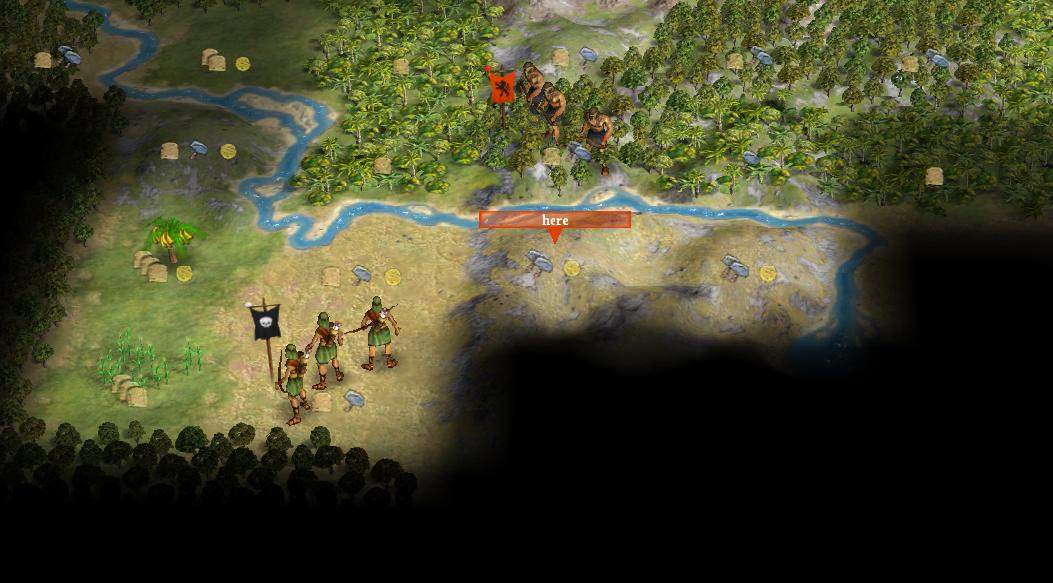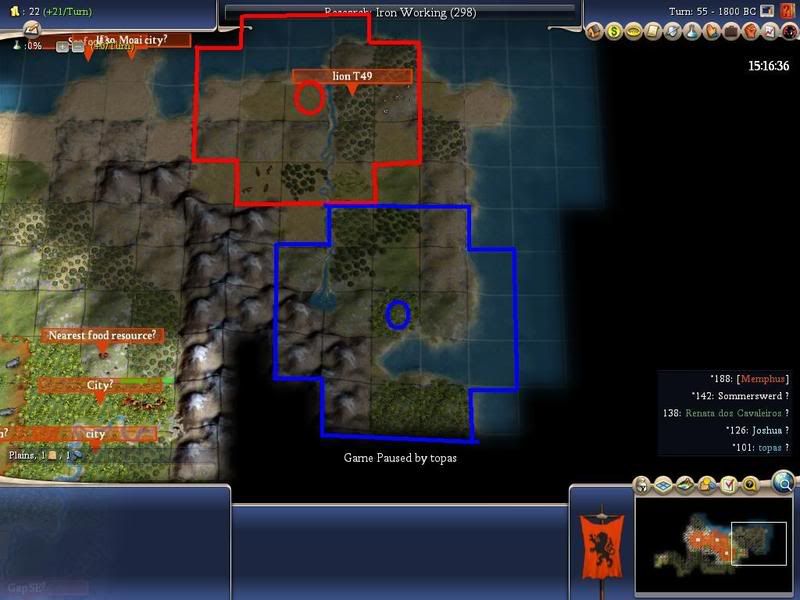That's all pretty marginal land - I think the city that gets clams and gold is a good one. Beyond that, a city SE of the horses and SW of the wheat, or even between them, will make a decent production city - can build a granary and cats until we get windmills and grow it larger.
That leaves a coastal city for later, which might be conquering a barb city. With our UB, marginal coastal cities become reasonably powerful.
Alot of our looks to be marginal because of the lack of food; south of that eastern copper has no food that we can see (we might get lucky and find some next turn), the eastern annex has 2 visible food resources, that little northern desert
may have sea food, and if it does, it's a possible contender for Moai (if not then IMO clams would be the next best contender).
However, other parts of our land look to be very good, for example a plains hill city south of the gems with corn and banana looks to be a very solid border city to get planted and growing asap; it could easily build a force on it's own to defend that corner of our empire, maybe it is even a contender for the IW as it has a minimum of 5 grass hills and 2 plains hills, and plenty of food.

Now, regoararr commented earlier that we should grow towards our enemies; that would require us to plant cities to the south of city 5, and south of CK (gems, and ultimately that city site), but we also need to consider others settling our eastern lands by a naval route, especially if we are taking their land as proposed. So, we would need to annex the eastern lands in fairly short order. Our economy could probably support 8 cities, more if they were easily cottageable cities, but unfortunately for us we don't seem to have easily cottageable land. But what we do have are a couple of nice coastal city sites, the Financial trait and up to 30 turns of being the only team with Metal Casting

Each population grown in the eastern two city sites can work coastal tiles while growing, and there are enough forests to chop to get a granary and lighthouse in both very quickly, and that, combined with JD and city 5 being cottaged is enough to support 12 cities without courthouses, should give us an economy larger than any other two teams combined.
Which brings me to the Collosus: the numbers I posted earlier in the thread for the different levels of commerce generated by Mine and Memphus' proposals were calculated with the Collosus being present. Here are the numbers without the Collosus:
Commerce
Memphus: 31 commerce (43 with Collosus) (gold size 7)
Krill: 42 commerce (69 with Collosus, representation) (gold size 11, wheat size 9)
40 commerce (63 with Collosus only)
So, as you can see the Collosus doesn't make a massive difference to Memphus' plan (39% increase), but does in mine (64% increase with rep, 57.5% without). This doesn't take into account the increased commerce in sheep (an extra 7 commerce) when it is working all of the coast while growing.
And AT is right, that what are mediocre coastal cities are going toebcome alot more powerful the longer this game goes on with the dyke, and when astro comes around we are going to want alot of coastal production, which is much better than relying on IS to build all or the majority of the boats. A city without any food in the south part of that eastern land is not going to be a good production city, it really needs that wheat to be a competitive city. So here are the production numbers:
Production (without bio, with windmills as required, working the gold)
Memphus: red, 16 hammers, blue, 13 hammers (assuming full fat cross)
Krill: blue, 11 hammers (without Moai), red, 24 (all mines).
And as my proposal has more coastal tiles, the production increase from the dyke would favour my proposal more. Also, My blue site has 11 coastal tiles (7 coastal, 4 sea), making it a possible Moia city (only city that could have more coastal tiles is a city on the northern tip of the desert with 14, 9 coastal, 5 sea), whereas Memphus' have (5+1) coastal tiles in the red city and 5 coastal tiles in the blue.





 using coastal tiles ( lighthouse) and add commerce (colossus plug again)
using coastal tiles ( lighthouse) and add commerce (colossus plug again)
